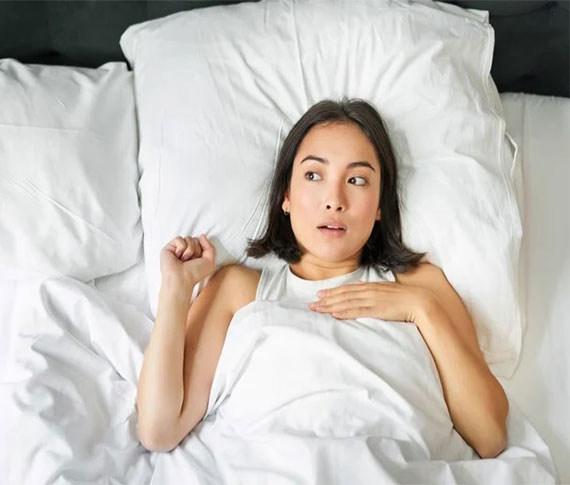Sleep myoclonus
In this post about “Sleep Myoclonus” you’ll find relevant information about this condition, several causes that trigger it, as well as how it is detected and treated. This is scientific information, and if you experience any symptoms or suspect sleep myoclonus, it is important to consult a doctor—or you can contact us via WhatsApp at 663 215 6973.
The term myoclonus refers to a quick, involuntary muscle jerk you cannot control. Hiccups are a type of myoclonus, as are sudden jerks or “myoclonic spasms” that you experience just before falling asleep. These types of myoclonus occur in healthy people and are usually not serious.
Does Rilassáre alternative medicine replace traditional medicine?
No, alternative medicine supports the treatments a patient may already be taking and is never contraindicated due to its safety and lack of adverse effects. Alternative medicine helps strengthen your immune system and regulates your body’s acidity for optimal functioning.


It’s been a hectic, demanding workday, but finally, it’s time to sleep. The body relaxes, muscles loosen, the mind quiets: wakefulness is giving way to sleep. And just as rest seems within reach, a sudden spasm jolts the body.
This sensation, which could be described as vertigo, is brief—and often doesn’t even wake us. Instead, it pulls us into an in-between state, from which we can easily slip back into sleep.
We might have dreamed of falling or simply were drifting off. What happens to the body and brain in those moments? Should we worry if it happens often? Is it related to stress, difficulty relaxing, letting go, and surrendering to sleep? Is there any truth to the theory that it’s a primitive reflex from when we used to sleep in trees?
What is sleep myoclonus?
The term myoclonus refers to a quick, involuntary muscle jerk you cannot control. Hiccups are a type of myoclonus, as are sudden jerks or “myoclonic spasms” you experience before falling asleep. These types are seen in healthy individuals and are usually not serious.
Other types of myoclonus may result from nervous system disorders, such as epilepsy, a metabolic condition, or a reaction to medication.
Treating the underlying cause of myoclonus can help manage symptoms. Sometimes, the cause is unknown or not specifically treatable. In such cases, the goal is to reduce how much it affects your quality of life.
Symptoms
People with myoclonus often describe the symptoms as movements, jerks, or spasms with the following features:
- • Sudden.
- • Brief.
- • Involuntary.
- • Surprising.
- • Varying in intensity and frequency.
- • Located in one part of the body or the whole body.
- • Sometimes severe enough to interfere with eating, speaking, or walking.
Nocturnal Myoclonus
This kind of disruptive pause on the threshold between wakefulness and sleep has a name—or rather, several: nocturnal or hypnic myoclonus, myoclonic spasms, hypnic jerks.
These are “involuntary, abrupt, brief, and simultaneous contractions of the body—or parts of it—that occur during the wake-sleep transition and may be spontaneous or triggered during the muscle relaxation typical of this stage.”
They can occur as single or multiple jerks. In the latter case, they may be consecutive and linked to awakening. They can also be focal (in one leg or both) or generalized (arms and legs moving together).
Why do myoclonic jerks occur?
First, it’s worth noting that most people have experienced a nocturnal myoclonic jerk at least once: it’s very common. Studies show up to 70% of people of all ages and genders experience them, though they may be more frequent in childhood.
So, why do they happen? They may be a defense mechanism and associated with micro-awakenings, especially in stressed individuals. But if we’re already asleep, what are we defending against?
At the onset of sleep, hypnic myoclonus occurs alongside changes in breathing, slower heart rate, muscle relaxation, and lower body temperature—normal physiological processes of falling asleep.
According to one theory, the brain perceives these changes as dangerous, possibly life-threatening, and sends a nerve impulse to "revive" the body… an innate defense mechanism.
This ties into the idea that it’s an ancestral reflex from when humans slept in trees. Is that just a myth?
It’s also a medical hypothesis—the brain may misinterpret the body's changes as dying. Or, it may act on a survival instinct: if you were about to fall or a predator was near, the jerk might help you place your foot back on a branch.
What conditions can sleep myoclonus be linked to?
In most cases, it's physiological myoclonus—“normal”—but sometimes pathological forms should be ruled out.
Associated conditions include oxygen deficiency or hypoxia, seen in people with sleep apnea, where breathing stops and oxygen drops. These cause a micro-awakening and a body jerk.
It’s rare, but some medications can promote apneas and lead to pathological myoclonus.
Another type occurs if jerks persist after waking up, which may be linked to epilepsy. These are more complex cases and require neurological diagnosis.
Lastly, other central nervous system disorders, such as degenerative diseases or dementia, may be involved. However, in young people with no history or illness, and if they occur early in the night, they’re most likely normal.
Factors that may favor myoclonus
Other factors like stress, lack of sleep, certain sleep positions, magnesium or iron deficiency, or high-impact exercise may favor hypnic jerks.
Alcohol and nicotine consumption, as well as stimulants like coffee, cola, tea, mate, or energy drinks, increase their frequency—mainly by raising alertness during sleep transition.
Hypnagogic jerks do not require treatment: they’re not considered a disease and don’t cause complications. If they cause discomfort, treatment focuses on improving relaxation or reducing alertness at bedtime.
When to see a doctor
If your myoclonus symptoms become frequent and persistent, consult a healthcare provider about diagnosis and treatment options.

